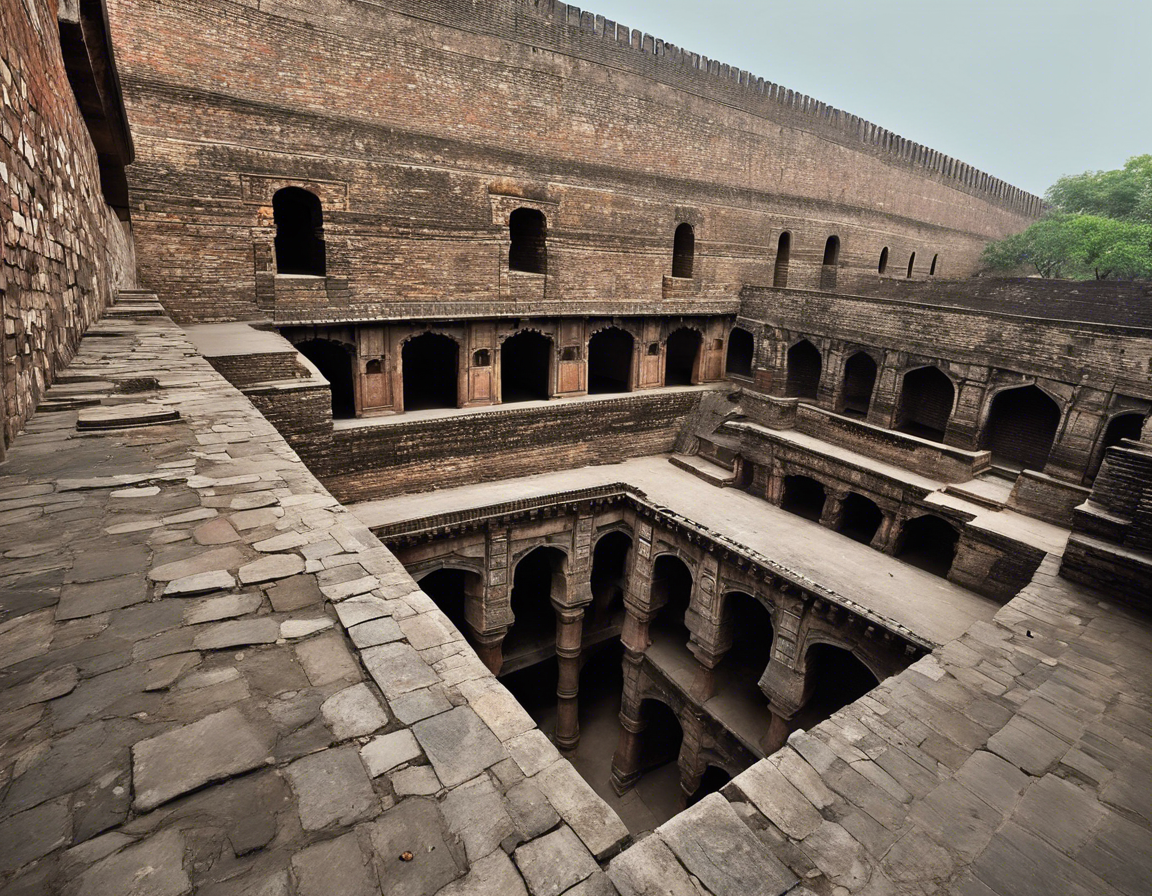
Exploring the Enigmatic Agrasen Ki Baoli
Agrasen Ki Baoli is a historical stepwell located in the heart of New Delhi, India. This architectural marvel is believed to have been built by the legendary king Agrasen during the Mahabharata era. Stepwells, also known as baolis in Northern India, were traditionally constructed to provide water for drinking, irrigation, and as a place for the community to gather and socialize. Agrasen Ki Baoli is no exception, with its intricate architecture and mysterious past attracting visitors from all over the world.
History of Agrasen Ki Baoli
According to popular belief, Agrasen Ki Baoli dates back to the 14th century and was built by Maharaja Agrasen, a revered figure in Indian folklore known for his wisdom and benevolence. The stepwell served as a crucial source of water for the residents of the surrounding area, especially during periods of drought. Over the centuries, the baoli has stood the test of time and remains remarkably well-preserved, showcasing the architectural prowess of its builders.
Architectural Features
Agrasen Ki Baoli is a fine example of ancient Indian architecture, characterized by its symmetrical steps leading down to the water reservoir. The stepwell is lined with arched niches on either side, adding to its grandeur and providing shelter from the scorching sun. The intricate carvings on the walls and pillars of the baoli depict stories from Hindu mythology, further enhancing its cultural significance.
Mysterious Legends
The baoli is shrouded in mystery and intrigue, with various legends and folklore adding to its enigmatic charm. Some believe that the stepwell is haunted by ghosts, while others claim that it is connected to an underground tunnel that leads to different parts of the city. These tales have only served to increase the allure of Agrasen Ki Baoli, making it a popular destination for paranormal enthusiasts and history buffs alike.
Significance in Popular Culture
Agrasen Ki Baoli has also found its way into popular culture, featuring in several Bollywood movies and TV shows. The stepwell’s ancient architecture and mystical aura provide the perfect backdrop for dramatic scenes and thrilling plot twists. Its popularity has only grown in recent years, with tourists flocking to explore its depths and unravel its secrets.
Preservation Efforts
In recent years, efforts have been made to preserve and restore Agrasen Ki Baoli for future generations to enjoy. The Archaeological Survey of India has undertaken conservation projects to maintain the structural integrity of the stepwell and ensure that it remains a cultural heritage site of national importance. Visitors are encouraged to respect the historical significance of the baoli and help in its upkeep by following designated guidelines.
Exploring Agrasen Ki Baoli
Visitors to Agrasen Ki Baoli can expect a unique experience that combines history, architecture, and a touch of mystery. As you descend the steps of the stepwell, you can almost feel the whispers of the past echoing through its chambers. The play of light and shadows creates a magical atmosphere, transporting you to a bygone era where kings and queens once roamed.
Photography enthusiasts will find plenty of opportunities to capture stunning shots of the baoli’s intricate carvings and architectural details. The symmetry of the steps and the reflections in the water below make for striking compositions that will surely impress even the most seasoned photographers.
Exploring Agrasen Ki Baoli is not just a journey through time but also an opportunity to appreciate the rich cultural heritage of India. As you wander through its corridors and gaze into its depths, you can’t help but marvel at the craftsmanship and vision of the artisans who built this magnificent structure centuries ago.
Tips for Visitors
- Arrive early to avoid crowds and capture the baoli in the best light.
- Wear comfortable shoes as you will be descending and climbing several flights of steps.
- Respect the rules and guidelines set forth by the authorities for the preservation of the site.
- Carry water and sun protection, especially during the hot summer months.
- Engage with the locals to learn more about the history and legends surrounding Agrasen Ki Baoli.
Frequently Asked Questions (FAQs)
1. What is the best time to visit Agrasen Ki Baoli?
The best time to visit Agrasen Ki Baoli is during the winter months (October to March) when the weather is pleasant, and the site is less crowded.
2. Is there an entry fee to visit Agrasen Ki Baoli?
No, there is no entry fee to visit Agrasen Ki Baoli. It is open to the public free of charge.
3. Are photography permits required to take pictures at Agrasen Ki Baoli?
No, photography permits are not required for personal use. However, commercial photography may need prior approval from the authorities.
4. Can visitors swim in the water at Agrasen Ki Baoli?
No, swimming or entering the water at Agrasen Ki Baoli is strictly prohibited for safety and conservation reasons.
5. Are there guided tours available at Agrasen Ki Baoli?
While there are no official guided tours, local guides are often available at the site to provide historical context and interesting anecdotes about the baoli.
6. Is Agrasen Ki Baoli accessible for differently-abled visitors?
Unfortunately, due to its historical architecture and multiple flights of stairs, Agrasen Ki Baoli may not be easily accessible for differently-abled visitors.
7. Can visitors bring food or snacks to Agrasen Ki Baoli?
Eating or littering at the site is discouraged to maintain its cleanliness and historical importance. It is advisable to enjoy refreshments elsewhere.
8. Is Agrasen Ki Baoli a protected heritage site?
Yes, Agrasen Ki Baoli is recognized as a protected heritage site by the Archaeological Survey of India and is subject to conservation efforts.
9. Are there restroom facilities available at Agrasen Ki Baoli?
There are limited restroom facilities available near Agrasen Ki Baoli, so it is advisable to plan accordingly before visiting.
10. What are the nearest attractions to Agrasen Ki Baoli in New Delhi?
Agrasen Ki Baoli is located in close proximity to several other popular tourist attractions in New Delhi, including Connaught Place, Jantar Mantar, and the Red Fort.
In Conclusion
Agrasen Ki Baoli stands as a testament to India’s rich cultural heritage and architectural prowess. Its mysterious past and intricate design continue to captivate visitors, offering a glimpse into a bygone era. As you explore its depths and marvel at its beauty, you can’t help but feel a sense of awe and wonder at this enigmatic stepwell nestled in the heart of bustling New Delhi.


